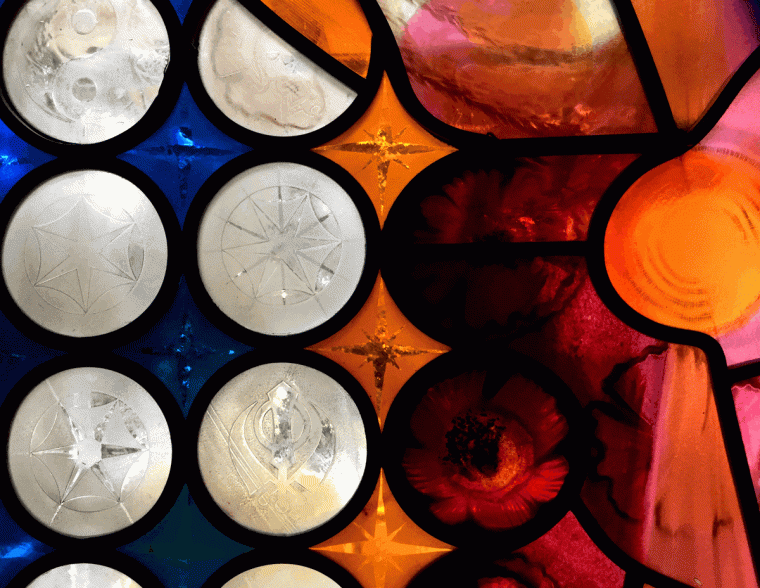A different approach to working with stained glass
Today I want to invite you into our studio to look at an approach we used on some windows we recently installed.
Maybe you’ll use this method exactly as you see it here today. Or maybe you’ll make changes, giving it a life that’s all your own. Whatever you do, I’m sure you’ll find the demonstration useful.
The designs
Please look at these proposals David prepared nearly two years ago now:
You see a lot of circles. And in those circles, you’ll probably detect some kind of shading.
But, at this scale (the designs are 18 inches high in real life; 450 mm), not much else is clear.
So have a look at this:
And now I’m sure it’s clear there’s far more than just a simple shadow in those circles.
Each roundel has an emblem.
Question for you:
Can you imagine how you might paint the emblem? How you might paint a lot of them?
It really is helpful to stop and consider for a moment, before I take you inside the studio and show you what we did.
Basically it’s a light image against a dark background.
And in case you’re wondering: it’s all clear (‘white’) glass, ideally with a bit of texture.
Have you got your own ideas? If so, let’s continue. First I’ll use words to list the individual stages. After that, you’ll find the video.
The individual stages are:
I’ll be brief here. This list is just to help you get your bearings:
Clean the glass.
Apply a sticky stencil to each circle.
Remove the unwanted part of each stencil. This is the uncovered area where the sandblaster’s sand will strike.
Sandblast.
Remove the remains of the stencil.
Fire-polish the glass to reduce its roughness. (This is especially important to ensure that, later on, the cement won’t stick.)
Apply a matt.
While the matt is still wet, apply a shadow.
And blend …
Allow the paint to dry.
Rub the matt to highlight it.
Fire again.
The video is coming up soon. We start at step 7 – with the painting. Please remember this: you don’t need a sandblaster of your own to work like this. We don’t have one. We have a friend who hired us theirs and let us use their studio. (Which reminds me. When I first quit my previous profession to learn stained-glass, I used to travel across London to a shop where I could hire a light-box by the day and a sandblaster by the hour.)
But now to the video.
What do you think?







